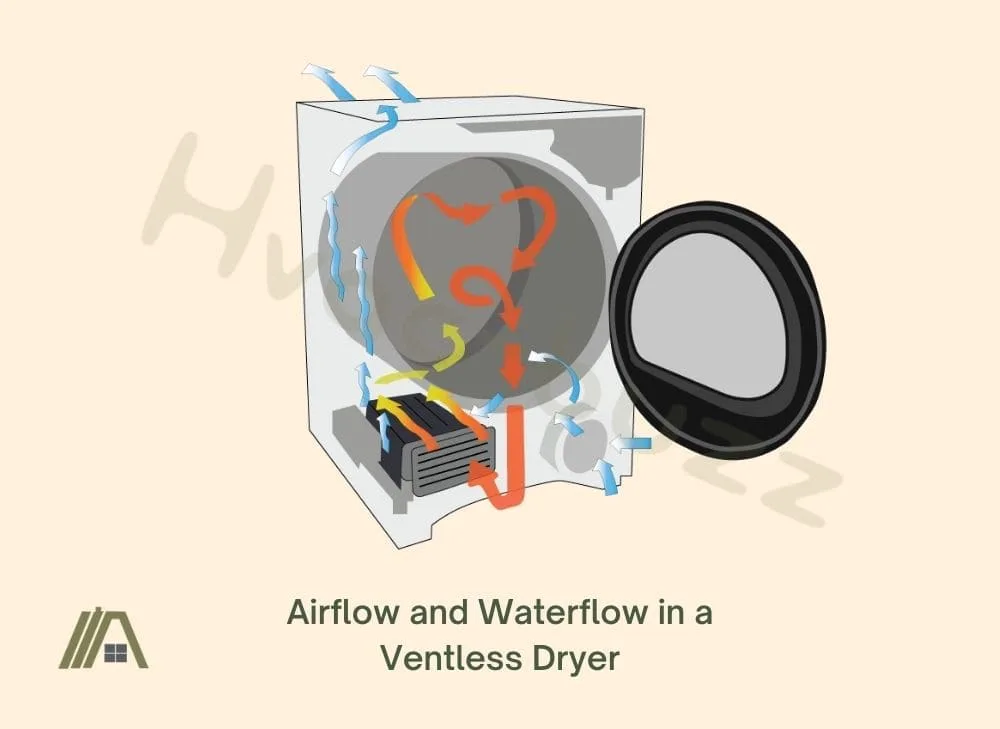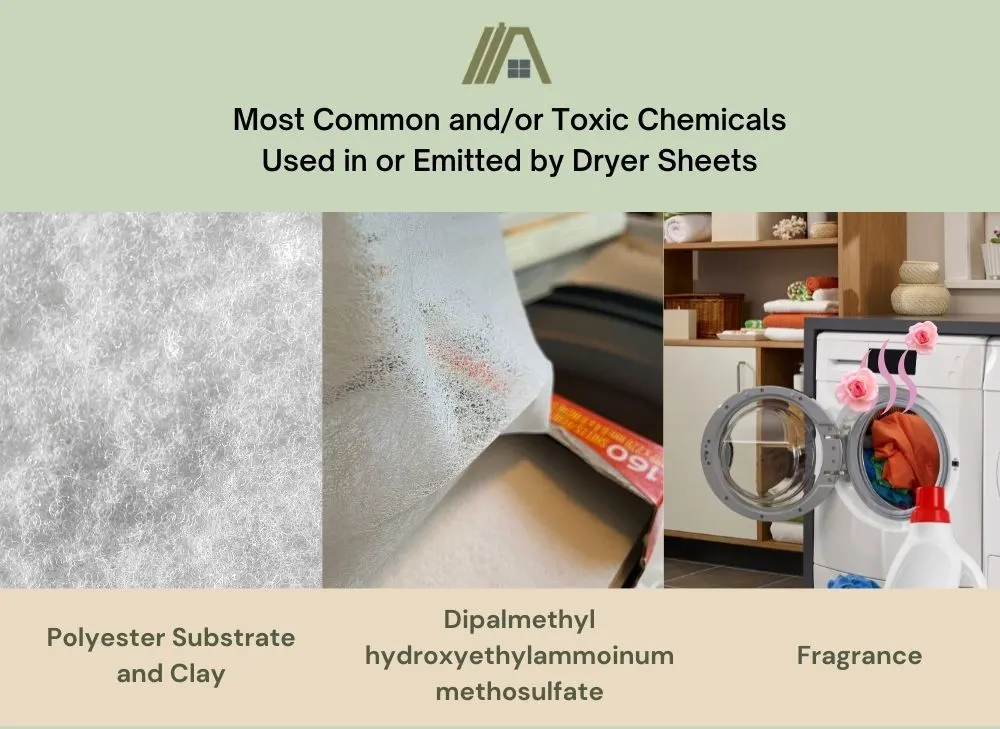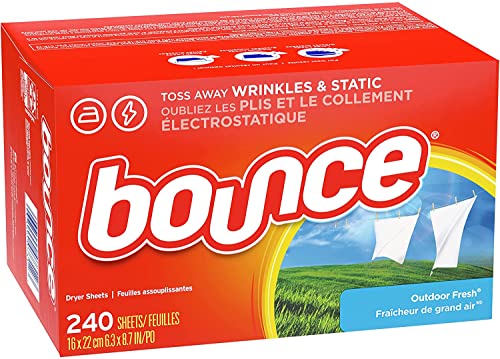A friend of mine recently purchased a ventless dryer, and because she knew that I had been doing my research into these appliances, she asked me if she could still use dryer sheets. It’s a valid question; after all, whatever is released by the dryer sheets has the potential to be released into the house. It’s also a question I never thought to ask until my friend actually purchased her dryer.
I found out that it’s not only a valid question, but it is also one for which the answer has a direct impact on health and safety.

Fragranced dryer sheets contain VOCs. Some VOCs in dryer exhaust are known human toxins. Research doesn’t say if dryer sheets are the main source of these VOCs, but the risk exists until proven otherwise. Ventless dryers eliminate lint, heat, and water before releasing the air, but they can’t remove VOCs.
Ventless Dryer Exhaust Is Not Released Outside
Despite the myths, ventless dryers do not just exhaust their used air into the room in which the appliance is standing. To do so would be unsafe and the powers that be would not allow it. Instead, these dryers utilize lint filters, condensers, and air recycling, to ensure that they do not negatively affect indoor air quality.
The hot air leaving the drum runs through two lint filters before reaching the condenser. Here, heat exchangers cool the air, forcing the moisture to condense out and be collected in a tank within the machine. In this way, ventless dryers deal with the three most pressing problems of dryer exhaust: lint, heat, and moisture.
But the dryers also go one step further, recycling the cooled air, heating it up again, and blowing it back through the drum to remove more moisture. At the end of the drying cycle, the filtered, cooled, and moisture-free air will be released into the room.

However, there are no processes in place inside the machine that can deal with harmful gases that may be released into the dryer air. This is why ventless dryers are never allowed to be gas-powered (CO risk) and why things like fragranced dryer sheets, which also release gases, need to be assessed carefully.
Do Dryer Sheets Generate Harmful Gases?
A study by The Environmental Health Perspective in 2011 determined that dryer vents emit gases with known toxicity.
They acknowledge that the quantities used in consumer products like dryer sheets are not likely to be toxic, but they presented a caveat in relation to fragrances dryer products, which have been known to cause respiratory irritation and negative health effects.
Dryer sheets contain many ingredients; not all will be harmful, but if even one is, then it’s better to avoid using them with a ventless dryer.
The following are the most common and/or toxic chemicals used in or emitted by dryer sheets. As ventless dryers do not exhaust air outside and there are no mechanisms in place within these units to deal with potentially harmful gases, we can assume that exposure to these chemicals is possible.
Dipalmethyl hydroxyethylammoinum methosulfate
Dipalmethyl hydroxyethylammoinum methosulfate is a mouthful to say. However, it is simply a fabric softener and antistatic agent used in many dryer sheets and fabric softeners.
Some say that fabric softeners have moderate respiratory effects, but the biggest issue is skin irritation, which is more linked to dermal exposure as opposed to inhalation exposure. In other words, breathing in the small quantities released, presents a lower risk to health than wearing clothes that have been washed and dried with fabric softeners.
Polyester Substrate and Clay
Polyester substrate and clay are what the actual dryer sheets are made from and what all the other chemicals are put onto.
Clay is used as a rheology modifier. This means that it slows down the melting of the fabric softener coating so that it does not form large streaks on your laundry.
The gases or fumes emitted in the presence of these substances are regarded as non-toxic.
Fragrance
Fragrance. Here we come to the most controversial ingredients in dryer sheets. Few companies will list the exact chemical, instead they simply list it as “fragrance” because they are not required to be disclosed according to the US Consumer Product Safety Commission.
Constant exposure to these chemicals within fragrances can lead to irritation of the eyes and airways, allergic skin reactions, migraines, and asthma attacks in sensitive individuals. This is likely because of the volatile organic compounds (VOCs) contained therein.
In the 2011 study we mentioned earlier, many VOCs were found in dryer exhaust. Two VOCs of note that were found to be present are acetaldehyde and benzene.
- Acetaldehyde is generally not toxic but dryer exhaust contains high enough concentrations to cause skin irritation, itchy eyes, or trouble breathing for asthmatic individuals. It is also a probable human carcinogen.
- Benzene is a known human carcinogen.
Not all the VOCs found can be attributed to dryer sheets; there is insufficient research into dryer sheets alone. However, in my opinion, if your dryer sheets are fragranced, then there is a greater risk that you will be exposed to at least some of these chemicals.

Confirm with Manufacturers
Some dryer sheets, like the Bounce Dryer Sheets (amazon link), claim that they are fine to use with all types of dryers, including high efficiency (HE) dryers, which extends to heat pump dryers (the most energy efficiency models out there).
However, there are dryer retailers who state that dryer sheets should not be used in any ventless dryers.
Therefore, it is incredibly important to contact your manufacturer to obtain the correct answer (the user manual is unlikely to say if dryer sheets are or are not allowed to be used).
Alternatives
Dryer sheets are not necessary and they are not the only option to make your clothing less static, softer, and smell nice. There are a number of great alternatives to use.
- White Vinegar – Spraying white vinegar on a washcloth and adding it to your dryer helps to soften your fabrics and reduce static.
- Reusable wool dryer balls (amazon link) – These dryer balls will last years, help your clothes dry faster, and help eliminate static.
- Aluminum foil balls can reduce static buildup.
- Essential oils – For fresh-smelling clothes, dampen an old clean sock and dab it with a couple of drops of your favorite essential oil (I love the lavender extract (amazon link)), then invert the sock and throw it in your dryer with the rest of your clothes.
Sources
https://www.cnet.com/home/kitchen-and-household/9-incredible-laundry-hacks-everyone-should-know/
https://www.lung.org/clean-air/at-home/indoor-air-pollutants/volatile-organic-compounds
https://cen.acs.org/articles/86/i15/Dryer-Sheets.html
https://link.springer.com/article/10.1007/s11869-016-0442-z
https://www.ncbi.nlm.nih.gov/pmc/articles/PMC3226517/
https://www.ewg.org/guides/substance_groups/79-Fabricsofteners/?page=3



